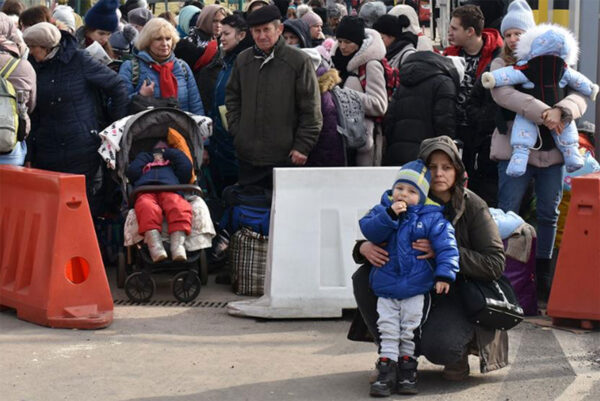This sponsored column is by Law Office of James Montana PLLC. All questions about it should be directed to James Montana, Esq., Doran Shemin, Esq., and Laura Lorenzo, Esq., practicing attorneys at The Law Office of James Montana PLLC, an immigration-focused law firm located in Arlington, Virginia. The legal information given here is general in nature. If you want legal advice, contact us for an appointment.
The United States and the countries of the European Union are offering differing levels of protection to Ukrainians fleeing the war.
These differences reveal deeper characteristics of the immigration bureaucracies, and the political systems that operate them, in both sides of the Atlantic. In this (mildly editorializing) explainer, we will explain the differences between the European and American approaches, and provide our assessment, as practitioners, about the workability of the U.S. approach.
As always, we welcome comments and will reply to all that we can.
Europe: Temporary Status Now, Benefits in the Interim, Adjudication Later
Every single country in the European Union that borders Ukraine currently offers free entry to Ukrainian refugees. Although the European authorities ask that Ukrainian refugees carry valid travel and vaccination documents with them, failing to bring those documents will not prevent you from entering the EU. No visa is necessary to enter.
Once a Ukrainian refugee enters an EU border state, she can move at will throughout the Union. She is eligible for an immediate grant of temporary immigration status until March 4, 2023. (This temporary protection will not prevent her from applying for permanent protection via the asylum processes of each member state.) She is eligible for social welfare assistance, medical care, education for her children and eligible to work.
This one-year temporary status will be extended to a full three years if the war continues.
United States: Temporary Status for People Already Here, Promises of Future Resettlement, No Visas, Unpredictable Behavior at the Border
The United States has taken a broadly different approach to Ukrainian refugees, characterized mainly by a preference for pre-existing law.
- The United States announced (but has not implemented) Temporary Protected Status for Ukrainians present in the U.S. on March 1, 2022. We discussed this at length in our last Statutes of Liberty — read all about it.
- USCIS has announced special flexibility for Ukrainians who are looking for certain immigration benefits, including (1) changing visa status, (2) expedited processing of advance parole requests, (3) easier rules for obtaining off-campus employment for Ukrainian students, (4) faster decisions on petitions and applications, including work permit applications.
- President Biden promised to admit “up to” 100,000 refugees to the United States through the U.S. Refugee Admissions Program.
- CBP has begun to admit Ukrainian nationals at the US-Mexico border who are seeking asylum under slightly looser guidelines, providing exemptions from Title 42 restrictions. These applicants are being paroled into the United States, which allows them to live and work here for one year while seeking another immigration status.
What are the differences between the U.S. and European approaches?
The difference is legal formalities; the U.S. is insisting on them, and the European Union is not. That difference is a big one, and it is creating – as law always does — absurdities. For example:
- Ukrainians applying for visitor visas to enter the United States are being turned down right, left and center, because — as a matter of legal formality — applicants for a visitor visa must prove that they intend to return home within 90 days. That legal formality doesn’t apply at the border, so, predictably, Ukrainians are showing up at the border. This is a stupid combination of policies. (Dear Uncle Sam: If you intend to admit Ukrainians tout suite, don’t make them fly to Mexico first. If you don’t intend to admit them, don’t admit them.)
- The U.S. is working within its existing legal framework to provide protection for Ukrainians already here — even previous visa violators –– but is offering nothing but a promise of future resettlement to people who aren’t here already. That promise is probably empty, because the U.S. refugee resettlement bureaucracy can’t handle the promised flow.
It is hard to say why the United States is pursuing a formalist approach to managing refugee flows. Simple proximity is probably the most important reason; the Europeans have nearly a million refugees at their doorstep, and we don’t. But, as practitioners in this area, we think that another important limitation on the U.S. response is the unmanageability of the bureaucratic machinery.
Without Congressional action, the Biden administration can only operate within the formal structure of pre-existing law, and the immigration machinery, divided as it is between bureaucracies with differing remits and differing levels of competence, is neither nimble nor humane.
We have seen Congressional action before, in previous refugee crises, like the breakup of the Soviet Union and the collapse of the South Vietnamese government. If the U.S. is going to do its part to shelter those fleeing the conflict, Congress is going to have to get off its collective duff and pass a law.



